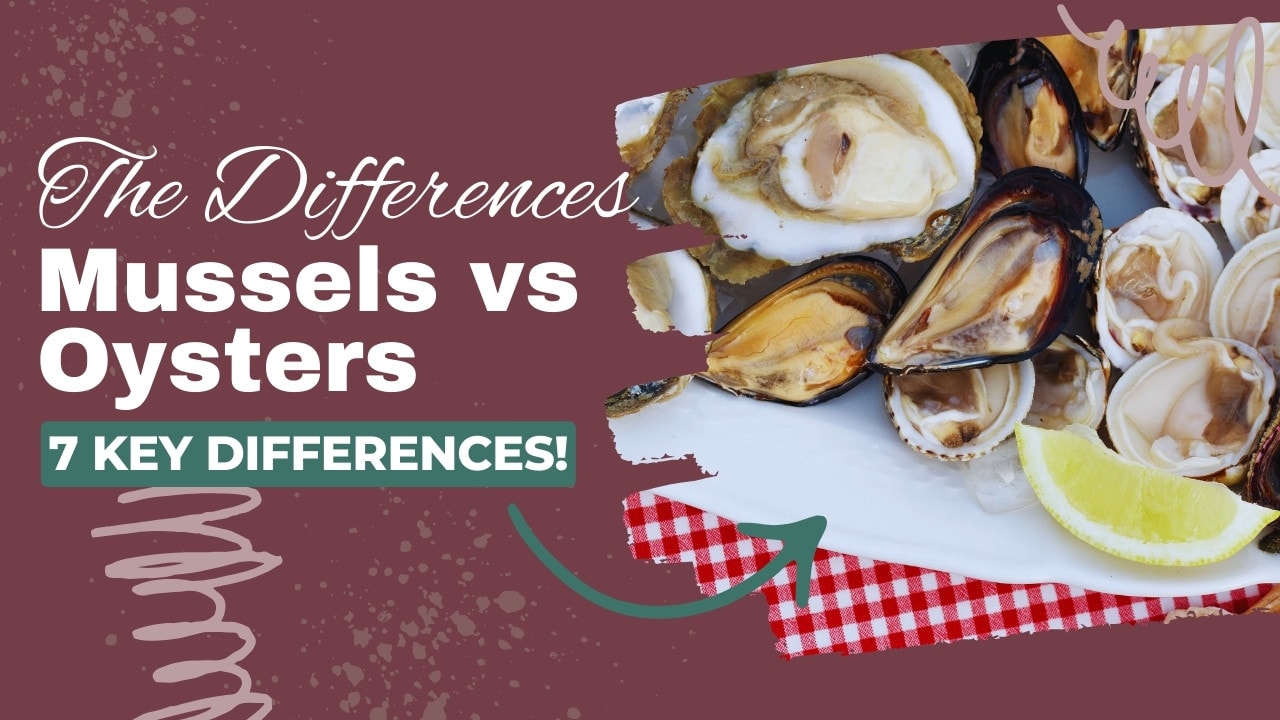Oysters and mussels are two of the most popular seafood options across the world. In fact, according to Britannica, mollusks (including mussels and oysters) are harvested at twice the rate of crustaceans (including shrimp, lobster, and crabs)!
When shopping for ingredients to make a seafood dish, you may find yourself wondering “What is the difference between mussels and oysters anyway?”
While oysters and mussels are both mollusks and can be used as substitutes for each other in most recipes, they aren’t very close cousins. They vary in size, taste, texture, usage, nutrition, sustainability, safety, and cost!
Let’s take a look in detail at the differences between mussels vs. oysters and how those differences can affect not just your recipe, but your health.
1. Size and Appearance
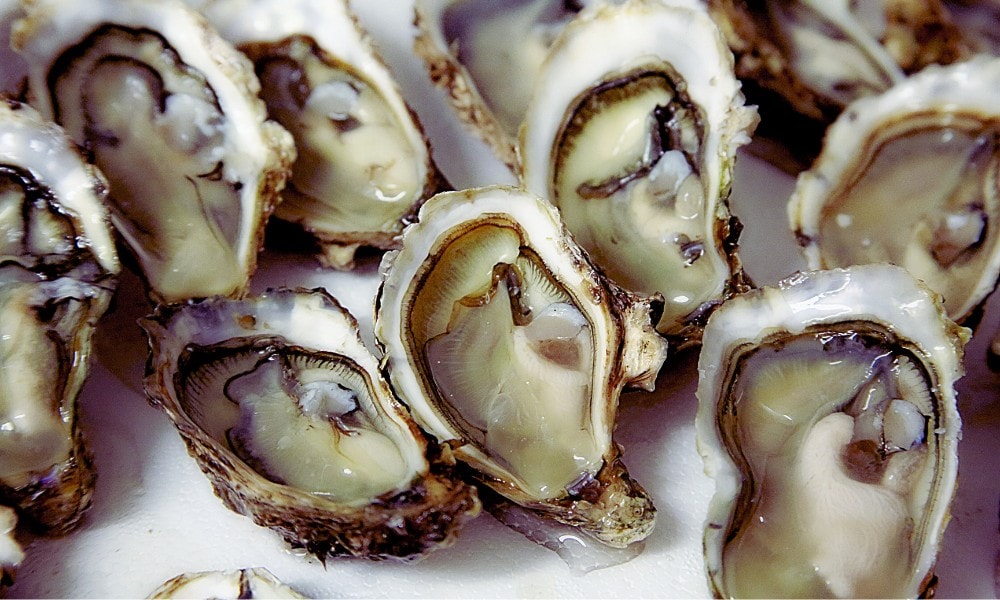
Oysters and mussels are both bivalves – that is, mollusks with two shells – but they are easy to tell apart visually.
Oysters are typically the larger of the two mollusks and have a more irregular shape. Oysters may be oblong or have a paisley shape, with or without fluted edges. The shells are thick and knobby, usually light gray to beige in color with lots of calcifications.
When served in the shell, oysters are usually shucked, with the top half of the shell discarded.
Mussels have long, smooth oval-shaped shells. The exterior is dark and shiny in color. Mussels are often served with both halves of the shell still connected.
How Big are Oysters?
While the world record largest oyster was almost 14 inches long, you won’t see them this large at your local grocery store or fish market!
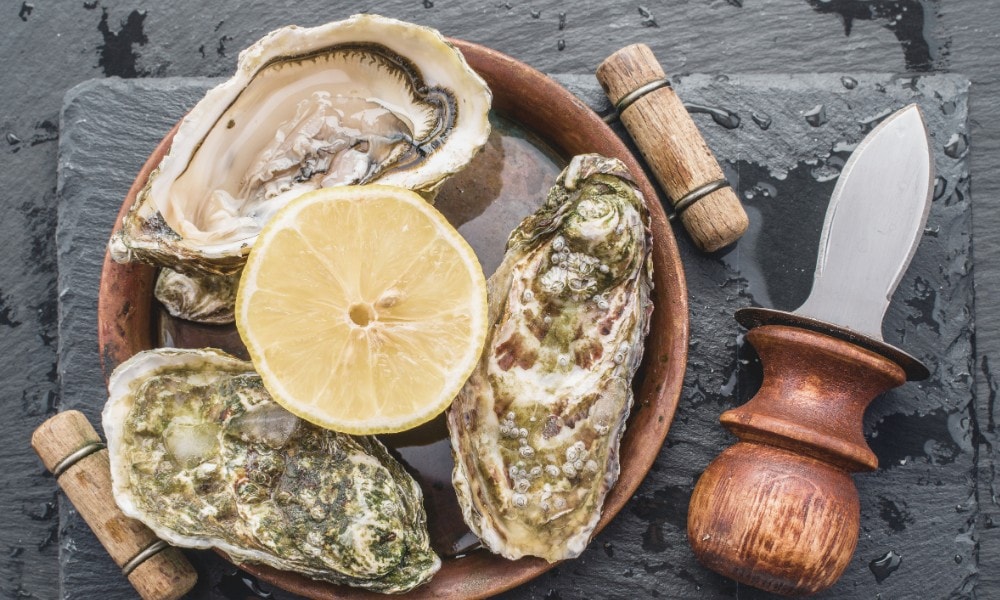
Each size of oyster has its preferred culinary application, so you’ll want to know the difference between the sizes.
Seafood experts suggest purchasing oysters that are between 2.5 and 3.5 inches long. These are considered the most versatile oyster size, with firm flesh and a more pronounced flavor.
How Big are Mussels?
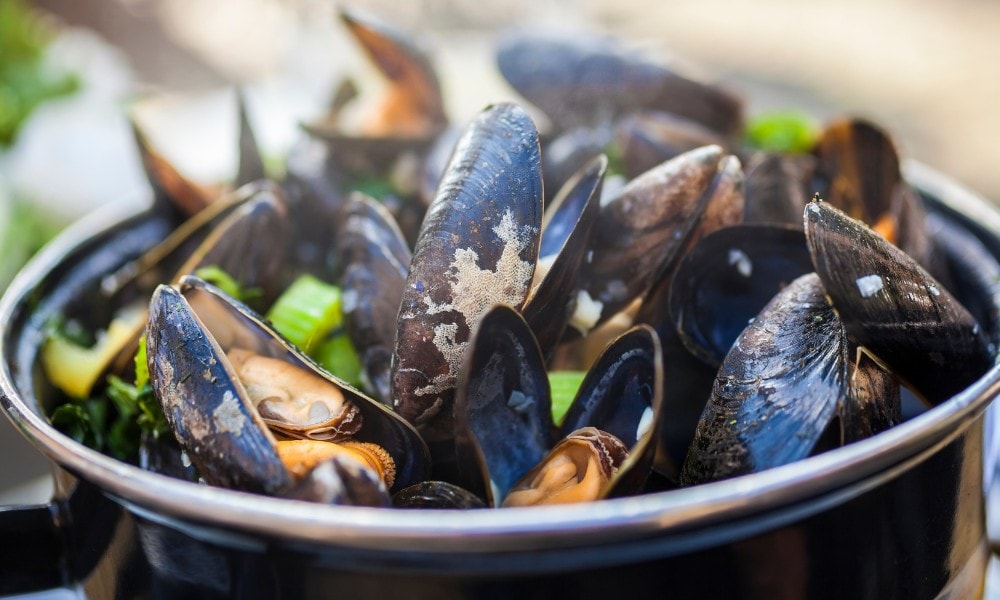
For this article, we will be primarily comparing black mussels to oysters.
2. Flavor and Texture
Oysters and mussels have very different flavors from each other. But there’s also a significant range of flavors among oysters. The flavor and texture of oysters are closely linked to their size.
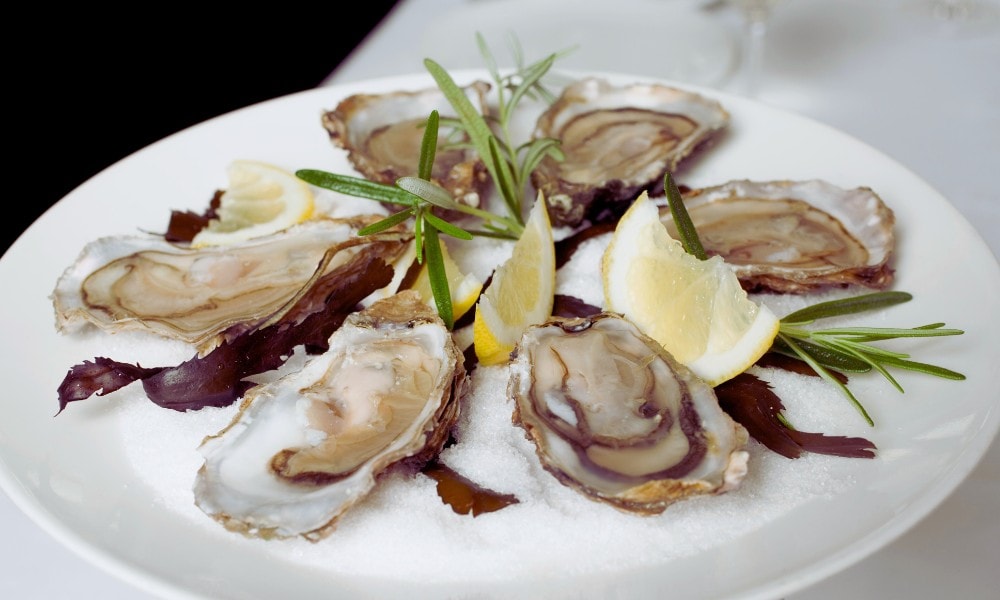
What Do Oysters Taste Like?
The flavor of an oyster can vary significantly based on the region and specific place of harvest. Oysters eat by filtering particles of food out of the water around them, so they are constantly taking in mud or sand along with their food, and absorbing salt and minerals – and flavors! –from it. West Coast oysters taste sweeter and milder. East Coast oysters can be sharp and briney-flavored.
What do Mussels Taste Like?
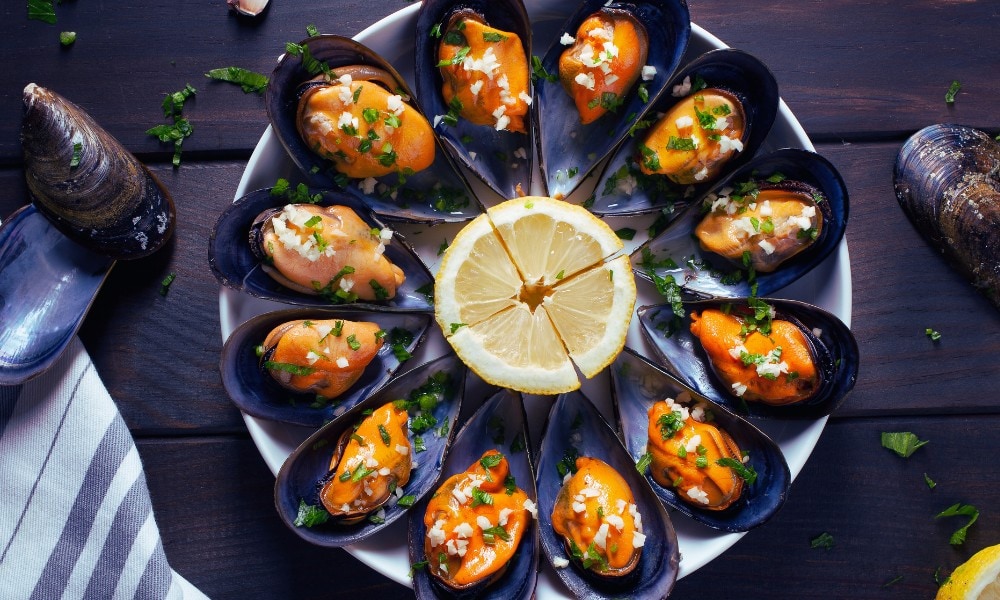
Mussels do not vary as much in flavor with region and habitat. Black Mussels have a mild, light flavor; sweet but with a hint of brine. They have a less pronounced flavor than oysters.
Many people consider mussels’ texture to be less slimy and less briny than oysters. However, mussels are often described as “chewy” and “meaty,” whereas oysters are described as “buttery” or “creamy.”
Oysters and Mussels are similar in that the larger the mollusk, the more intense the flavor becomes.
Texture of Oysters vs Mussels
Large mussels and oysters also usually present a meatier texture compared to smaller ones, which may be preferred in certain dishes.
Smaller mussels have a more delicate texture and are often used in mixed seafood dishes, as they blend a bit more easily with the other ingredients.
Smaller oysters are often eaten raw thanks to their more delicate texture and much smaller size, which allows the diner to enjoy the flavor without excessive chewing or the need to cut the oyster.
3. Culinary Uses
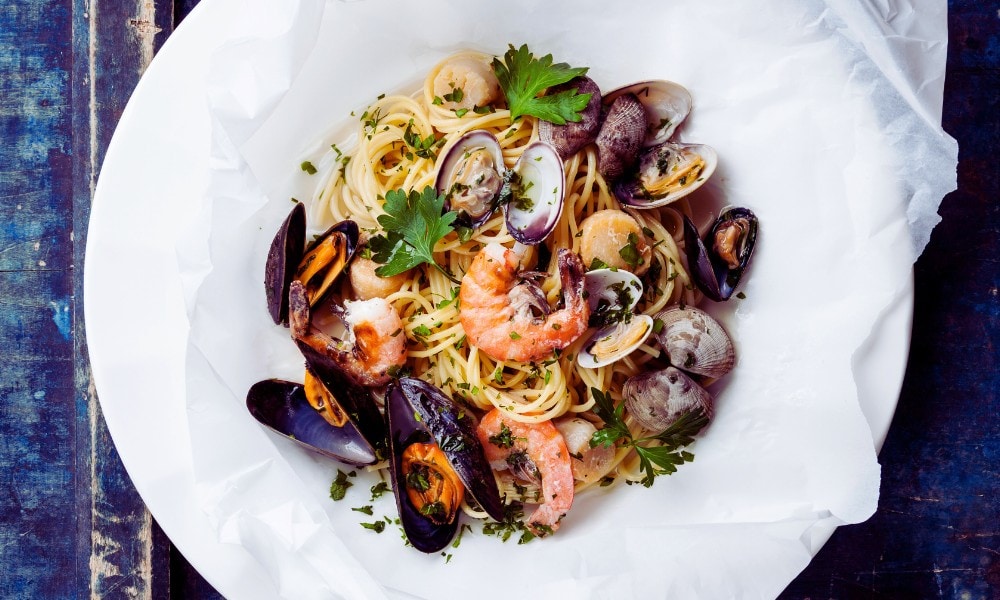
Mussels are used in a variety of delicious seafood dishes, including soups, stews, and pasta. You may find them steamed, sauteed, or cooked with wine and aromatics.
Oysters can be cooked in various ways, including baking, frying, and grilling. However, they are often served raw with a variety of toppings. They are less common in soups or stews, often being cooked and served in a way that allows their distinct flavor and texture to shine. Because of their higher price, many chefs desire the oyster to be the “star” of the dish.
Keep in mind that while mussels and oysters can be substituted for each other in many dishes, a substitution means the flavor profile or texture of the dish may change.
4. Nutrition
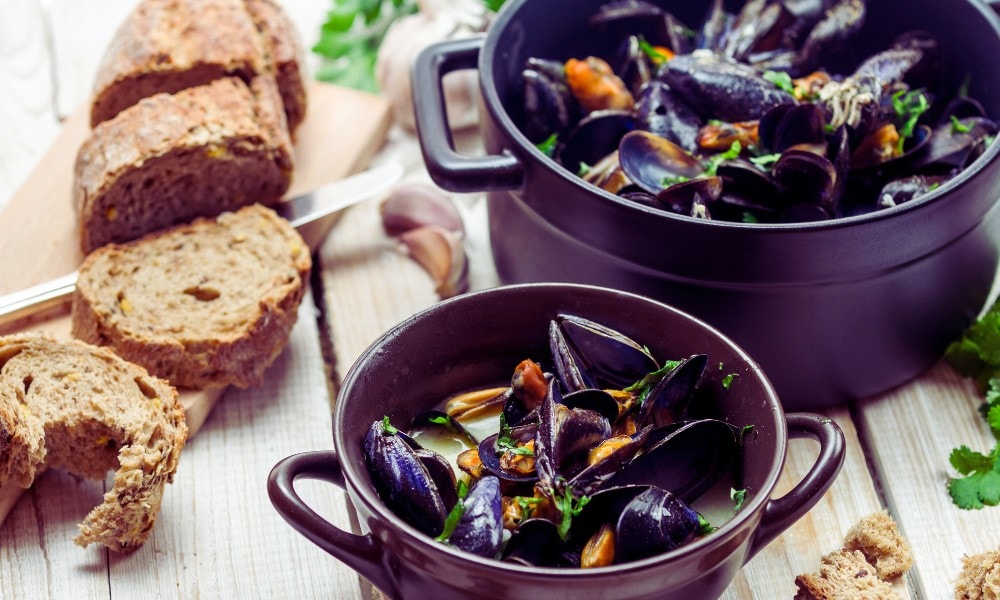
You may be surprised to learn there is quite a difference between the nutritional values of mussels and oysters! While both are nutritional powerhouses, when it comes to vitamins, Mussels are the clear winner.
Mussels contain more vitamin A, vitamin C, vitamins B1-B3, B5, B6, folate, vitamin B12, manganese, and selenium.
Oysters contain more vitamin K, vitamin A, zinc, iron, and copper.
Oysters are slightly lower in calories at 69 calories, while mussels contain 74 calories when compared in equal weights (85 grams). However, mussels pack 10 grams of protein, compared to 8 grams of protein in Oysters. The fat content is nearly identical, with 2 grams in Oysters and 1.9 grams in Mussels.
The nutritional difference between the two is relatively minor, as both offer a good balance of protein, healthy fats, and necessary vitamins and minerals. Just keep in mind that preparation will affect nutritional content.
5. Sustainability
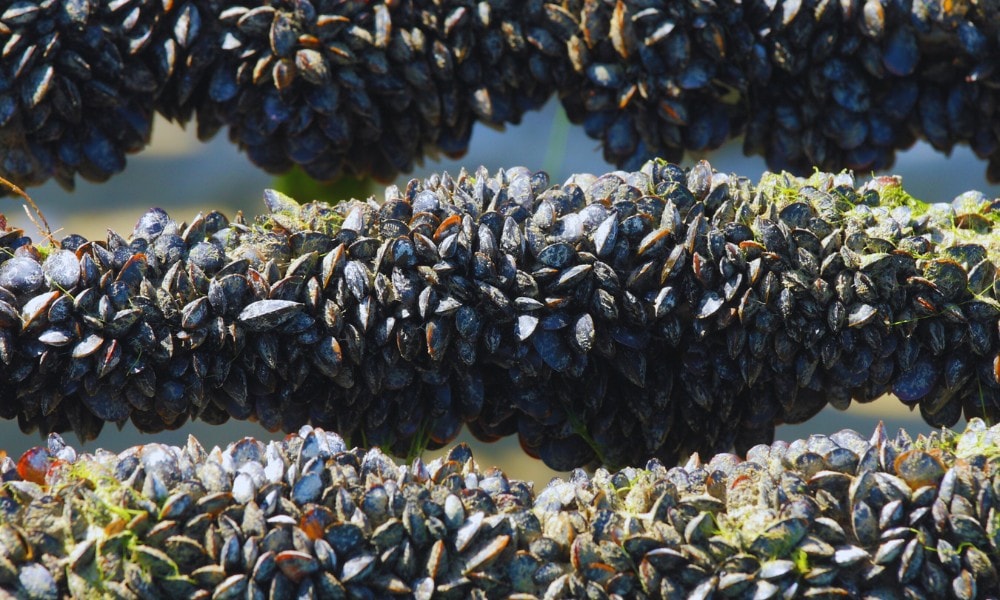
Farmed and wild mussels are considered highly sustainable because of their efficient feeding habits, rapid growth rate, and low input requirements. They are excellent filter feeders, cleaning the water around them, according to the Massachusetts Division of Fisheries and Wildlife.
Oysters are also sustainable because of their superior water-filtering abilities and their potential to create habitat structures. However, their cultivation is more challenging and less adaptable than that of mussels.
Both are excellent sustainable choices and the choice between them may depend on specific farming practices in your local area. Don’t be afraid to ask questions of your supplier. If sustainability is important to you, look for mollusks that are grown and harvested with minimal disturbance to the ocean floor.
6. Safety
Mussels contain higher levels of mercury, while oysters contain higher levels of cadmium, according to USDA data. Many health authorities provide guidelines on how much shellfish to eat to minimize your exposure to heavy metals.
Many dieticians recommend eating oysters no more than 2-3 times a week, and mussels may no more than 3-4 times a week. Speak with your physician to find out how often it is safe for you to consume them, or about consuming any supplements that contain oyster powder.
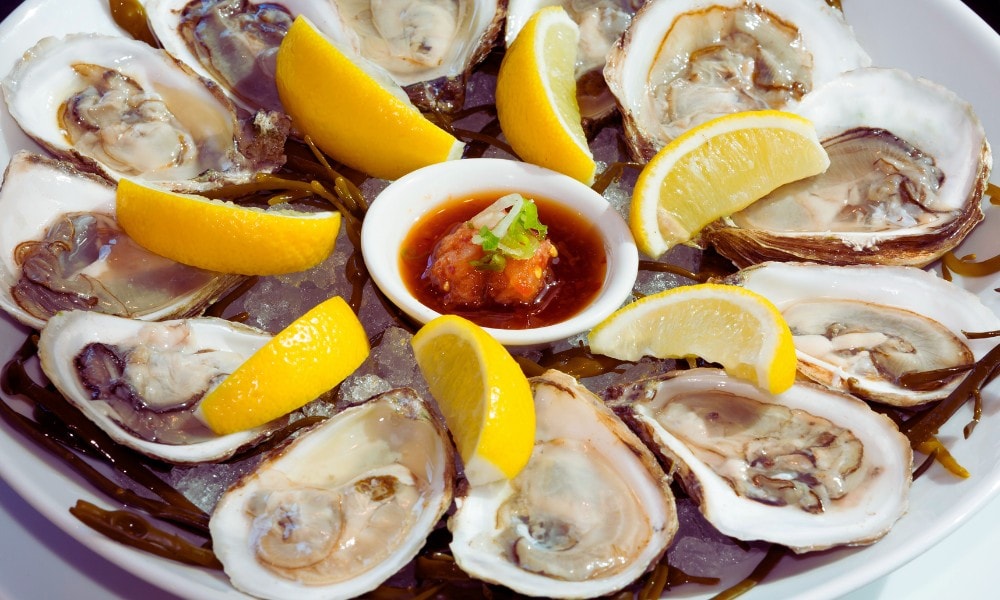
Heavy metal concerns aside, oysters are a little more risky to eat, simply because they are more likely to be eaten raw. In most cases, mussels are served cooked, which reduces the risk of food poisoning from harmful bacteria.
This is not to say oysters are unsafe, but foodborne illness from raw oysters is a real concern, especially for those with weakened immune systems. Pregnant women may consume cooked shellfish, but the National Capital Poison Center (poison.org) advises pregnant women specifically to avoid raw oysters.
Oysters require more delicate handling and storage to keep them fresh, but no shellfish should ever be left out of cold storage.
It is important to buy both mollusks only from reputable sources to avoid illness, either from improper handling or harvesting in polluted waters.
7. Cost of Oysters vs. Mussels
If you’ve ever eaten mollusks in a restaurant, you’ve probably noticed that one commands a higher price than the other. This price difference extends to fish markets and grocery stores as well! But why?
Oysters are more expensive than their mussel rivals because the demand for oysters is higher.
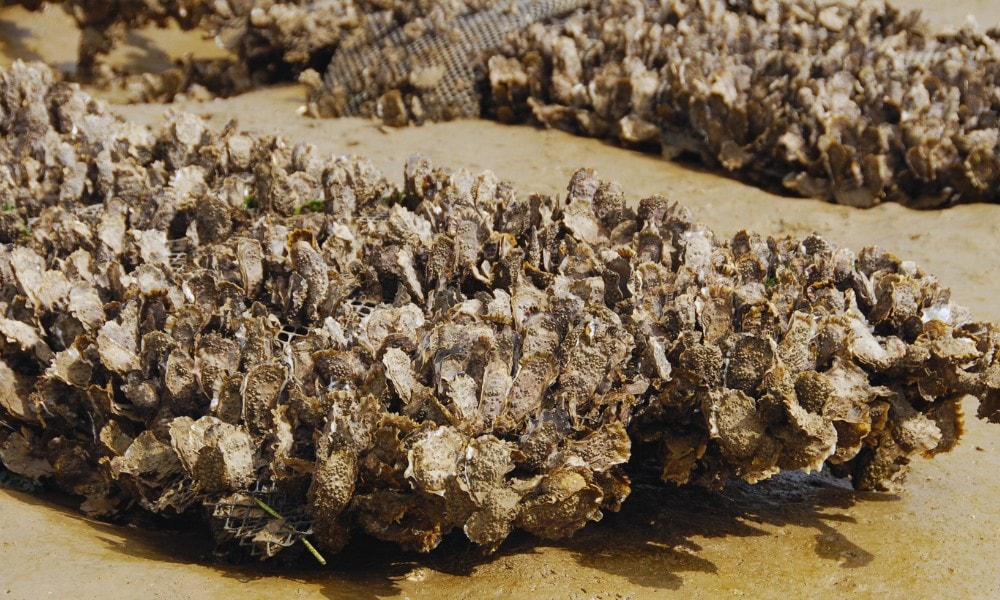
They must have an excellent publicist because oysters are known as a romantic food. They are touted as an aphrodisiac, though mussels can make the same claim. Oysters are seen as a rare and luxurious delicacy. This is in part due to overharvesting as far back as the 1800s, leading to a scarcity of what was once a common food.
Oysters are also more challenging to grow than mussels. Mussels are more adaptable and can be grown in a range of environments, while oysters require much more specific growing conditions.
Mussels also grow more quickly! Some can be harvested in as little as a year, while it can take multiple years for some oysters to reach their desired size.
Mussels are more prolific than oysters because of their high reproductive capacity. This helps keep the price of mussels lower than their oyster counterparts.
Mussels are also typically eaten cooked, which means they can be frozen, in addition to being sold fresh. Oysters are known for being eaten raw (though they are certainly cooked, as well).
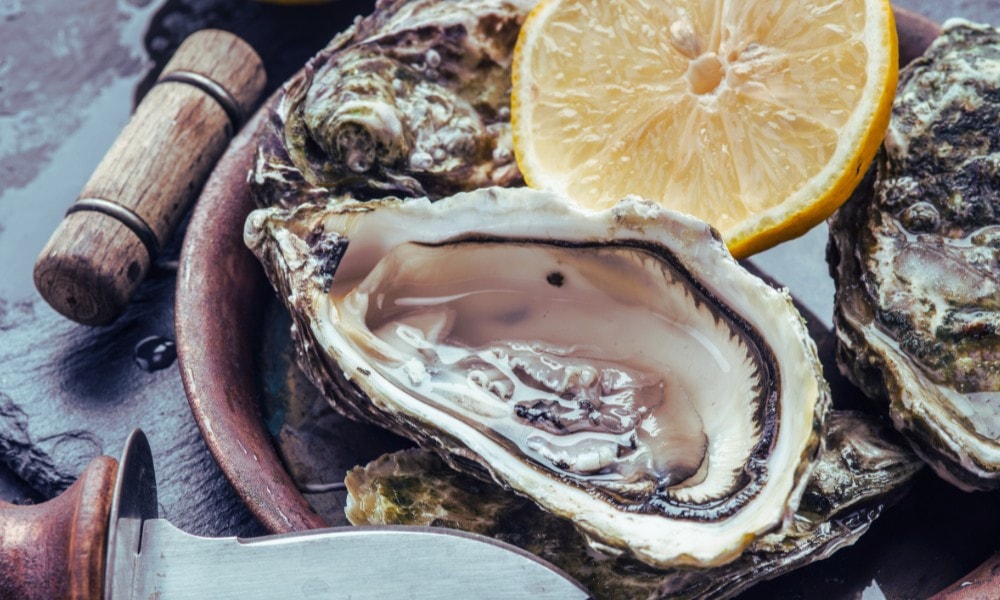
The desire for fresh, raw oysters far from the sea drives the price up as they must be stored properly and sold quickly to keep them from going bad. Similarly, oysters are more sensitive to change in temperature and handling, which makes it trickier to transport and store them.
Conclusion
While oysters and mussels can be substituted for each other in many dishes, the cost of doing so may make you think twice before you toss expensive oysters into a seafood stew! The cheaper, humble mussel packs more nutrition for a lower cost, allowing you to save your dollars for occasions in which you have a hankering for raw oysters, or perhaps want to impress at a fancy dinner party.
Ultimately, mussels and oysters are both prized for their versatility and flavor. The choice between them often comes down to personal preference when considering their flavor, texture and the culinary application in which they will be used.
Are you the raw oyster-eating type, or do you prefer a dish of cooked mussels over pasta with butter sauce? Let us know in the comments!

